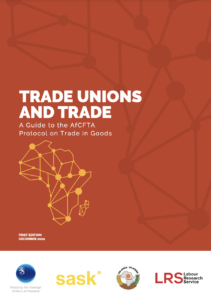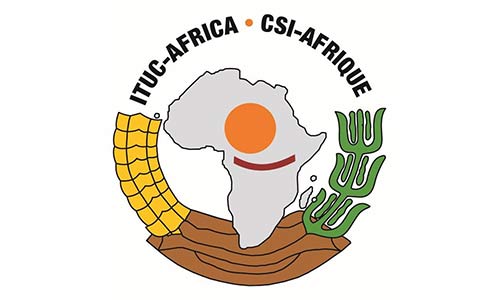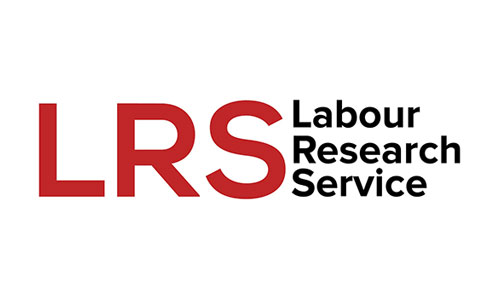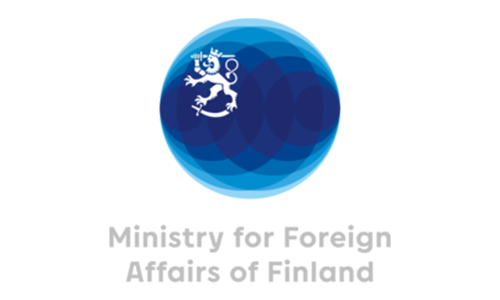The African Continental Free Trade Area (AfCFTA) aims to eliminate tariffs and reduce non-tariff barriers to achieve trade liberalisation.
Tariff barriers represent financial barriers or the cost of bringing a product or service into a country or taking it out while non-tariff barriers are non-monetary. Non-tariff barriers include laws, regulations, policies, restrictions, labelling requirements, private sector business practices, or prohibitions.
Tariff reductions in the trade of goods could lead to outsourcing and loss of jobs. Consider a country with high costs of labour. Its competitiveness is diminished because the products cost more. To remain competitive, the country could either reduce the number of jobs or outsource jobs to a country with a lower cost of labour. Any proposed tariff reduction under the AfCFTA needs to be considered individually.
Of the sectors at risk of being set back by the AfCFTA, agriculture is the most notable. It dominates the African economy and is a major source of employment and especially for women who occupy 50% of the associated jobs.
The figure below shows the services industry in Africa hasn’t become the dominant sector, compared to more developed regions. This creates a unique situation demanding protections for a very vulnerable workforce, as well as small-scale agricultural producers who can’t compete with subsidised agri-businesses in more developed countries.
Sectoral employment shares in Africa and other world regions
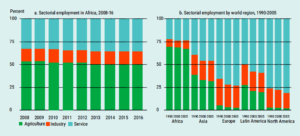 Source: Albert, T (2019)
Source: Albert, T (2019)
Another issue is the possible dominance of foreign countries through the AfCFTA, which could lead to loss of revenues and stifling of Africa’s development. Trade union federations in Ghana, Nigeria, South Africa and Kenya have made demands for stricter rules to safeguard African markets for local products.
Given the disparities between African countries, eliminating trade barriers is complex. Nigeria, Egypt and South Africa alone are set to hold as much as 50% of the continental Gross Domestic Product (GDP). The level of specialisation and competitiveness in the countries will determine to what extent they will benefit from reduced tariffs. For the countries with low tariffs, the impact of AfCFTA will be less. Similarly, countries will experience the impact on their fiscal budget differently. The AfCFTA makes certain provisions to accommodate these disparities. For trade unions to engage the negotiation process as informed role-players, it’s important to understand these issues.
The AfCFTA features seven protocols namely; trade in goods, competition, trade in services, dispute settlement, investment, intellectual property and e-commerce. Here we unpack the key areas of importance within the Protocol on Trade in Goods.
Key Area 1: Non-tariff barriers – finding a balance between obstructive and protective barriers.
Non-tariff barriers such as licenses and inadequate infrastructure represent the highest cost of doing business in Africa. Take the example of Kenya’s complicated border crossings. The country has over 20 government agencies responsible for clearing cargo arriving at its ports, borders and airports, according to the United Nations Development Programme. The AfCFTA’s annexure on non-tariff barriers has been concluded but the challenge will be in the implementation. Thus continuous monitoring, border visits and government collaborations will be required.
In its Trade Union Guide to Bilaterals, the International Trade Union Confederation (ITUC) warns against the removal of all non-tariff barriers. Rather, ITUC says producers in developing countries should be helped to meet any regulations:
“Many NTBs (non-tariff barriers) are legitimate measures to ensure the security and safety of products, such as regulations regarding packaging and information on dangerous substances like chemicals. Rather than relaxing such regulations, assistance should be given to producers in developing countries to meet such regulations”
Given the fact that non-tariff barriers can be both obstructive and protective, each tariff should be considered on an individual basis to ensure that while trade is being promoted, businesses are also protected. There should be clear demands for assistance to producers to meet non-tariff barriers.
The Trade Union Response
Caution against the removal of non-tariff barriers that ensure safety and security
What do we need to look out for, deliberate and demand?
Trade unions should demand that non-tariff barriers be considered on an individual basis. Some of the good questions to pose include the following:
- What non-tariff barriers are proposed to be reduced? Is it, for example, a barrier necessary to ensure the health and safety of workers? OR Is it an unnecessary bureaucratic procedure?
- Which non-tariff barriers should be maintained to protect local industries and jobs?
- What assistance can be given to producers to better meet non-tariff barriers?
- How will the implementation of the removal be monitored? Is it feasible and is the necessary capacity available?
Key Area 2: Least Developed Countries, sensitive goods and tariff lines -consider each tariff item
Low-income countries that are experiencing long-term obstacles to growth are referred to as Least Developed Countries (LDCs). Trade agreements usually acknowledge disparities between member countries through provisions such as allowing for lesser reductions and longer implementation periods.
34 member states within the AfCFTA are classified as LDCs. The figure below illustrates the schedule of liberalisation envisaged under the agreement.
AfCFTA liberalisation schedule allowing for LCDs under AfCFTA
| COUNTRY CLASSIFICATION | LDCs | Non-LDCs | G6 countries (Ethiopia, Madagascar, Malawi, Sudan, Zambia, Zimbabwe) |
| Full liberalisation | 90% of tariff lines | 90% of tariff lines | 90% of tariff lines |
| 10-year phase down | 5-year phase down | 15-year phase down | |
| Sensitive products | 7% of tariff lines | 7% of tariff lines |
Not yet determined |
| 13-year phase down (current tariffs can be maintained during first 5 years – phase down starting in year 6) | 10-year phase down (current tariffs can be maintained during first 5 years – phase down starting in year 6) | ||
| Excluded products | 3% of tariff lines | 3% of tariff lines | Not yet determined
|
Source: Hartzenberg, T (2020)
Within the above schedule, non-Least Developed Countries will have a five-year period to implement trade liberalisation and LDCs a decade. Six countries (Ethiopia, Madagascar, Malawi, Sudan, Zambia and Zimbabwe) secured a 15-year phase-down period claiming they face specific development issues.
In addition to the LDC distinction made within the AfCFTA, the Trade Law Centre notes that certain decisions have already been made on the percentage of goods that will be liberalised:
- Member states have already agreed that 90% of the different tariff lines will be liberalised.
- The remaining 10% are divided into two categories: 7% will be sensitive products; 3% will be excluded completely, but the excluded products may not account for more than 10% of their total trade
Thus, the ultimate agreed goal is 97% tariff-free trade over 15 years. Each country will have a tariff book or schedule comprising thousands of tariff lines for different goods and services. Within these different tariff items, some will be classified as sensitive goods. Sensitive goods will need more protection and will receive a longer phase-in period. In South Africa, for example, the following sensitive goods have already been excluded from liberalization:
- Carcasses and half carcasses of beef and pork, chicken, ham, and pork-belly
- Honey, and flavoured yoghurt
- Cut flowers and most vegetables
- Pasta, couscous, peanut butter, olives, and gherkins
- Preserved pineapples
- Beauty products
- Wooden statuettes and wickerwork
- Walking sticks
- Wooden and metal furniture.
What do we need to look out for, deliberate and demand?
Tariffs protect local industries, consumers and workers and therefore serve an important role. Given that one of the main goals of the AfCFTA is to get rid of both tariff and non-tariff barriers to bring about the liberalisation of trade and services, trade unions should not accept any form of zero tariffs without adequate social justifications.
While the AfCFTA allows for longer periods for LDCs, unions must consider the following questions and build their responses accordingly:
- What tariffs are proposed to be reduced? Is it, for example, on a product produced locally through which many jobs stand to be lost?
- Which tariffs should be maintained to protect local industries and jobs?
- Should some products receive lower tariff cuts or longer implementation periods?
- What products are being considered for the 7% of sensitive goods and 3% of exemptions and do we agree with these?
- Is the implementation period allowed for my country adequate to protect workers and the economy?
- Will the proposed tariff cuts in any way prohibit my country from developing and implementing policies aimed at decent work, food security, access to quality public services, poverty reduction and equal distribution of incomes?
Key Area 3: Rules of Origin – a critical tool under negotiation
Rules of Origin (RoO) represents the criteria needed to determine the nationality of a product. Essentially, RoO is the passport that determines a product’s eligibility for preferential treatment within a trade agreement.
RoO can prevent dubious foreign companies and product dumping within the AfCFTA. Some multinational companies can take advantage of the zero tariffs implemented through the AfCFTA, for example, producing a product in China and then branding it as African just because the packaging was done locally. Other forms of malpractice by multinational companies include establishing subsidiary companies in Africa to export products throughout the continent tariff-free.
From a labour perspective, RoO becomes even more important. Without it, local industries will compromise on labour costs and standards to remain competitive.
Experts agree that the success of the AfCFTA will depend on the RoO being simple, transparent, business-friendly and predictable. While having simplified RoO is ideal, it’d be dangerous to overlook certain sectors and workers. A study in Asia found that companies that viewed RoO as trade barriers lacked knowledge, which stopped them from trading in certain areas. In this regard, there’s a need to advocate for and support initiatives for improving not only the simplification of RoO but also transparency and accessibility.
What do we need to look out for, deliberate and demand?
Trade unions must demand to be included in RoO negotiations. The outcomes of these complex negotiations will have a direct impact on the extent to which foreign companies can undercut local industries and consequently a country’s ability to meet the Decent Work Agenda.
Supporters of simplified RoO argue it encourages more businesses. Nevertheless, trade unions should ensure local industries and jobs will be protected by ensuring the RoO are easily accessible and transparent. The United Nations Conference on Trade and Development has some solid suggestions on how to achieve that, such as:
- Developing an online intra-African trade platform serving as a repository for Rules of Origin in multiple local languages.
- Improving the capacities of customs authorities in enforcing RoO and building cross-border cooperation among customs authorities to reduce the associated costs.
- Establishing regular platforms for public-private dialogues to identify implementation challenges
Importantly, trade unions should actively monitor and evaluate RoO. Limited implementation capacity will easily be exploited by rogue traders and companies looking to benefit unfairly from zero tariffs. A Rules of Origin Committee will meet every year to review implementation. Trade unions must demand a seat at this gathering and ensure the concerns of workers are tabled and addressed.
Essential Resource: Trade Unions and Trade | A guide to the AfCFTA Protocol on Trade in Goods
You might like:
AfCFTA Protocol on Trade in Goods: Eight questions for trade unions to ask
Why it pays to link products to places – and how countries in Africa can do it
Marie Daniel
Marie Daniel is an Associate at Labour Research Service. Marie has an urban studies and development economics background and one of her research passions is organisation and participation approaches within the informal sector. She is intrigued by the manner in which participatory democracy is approached and implemented in South Africa.

